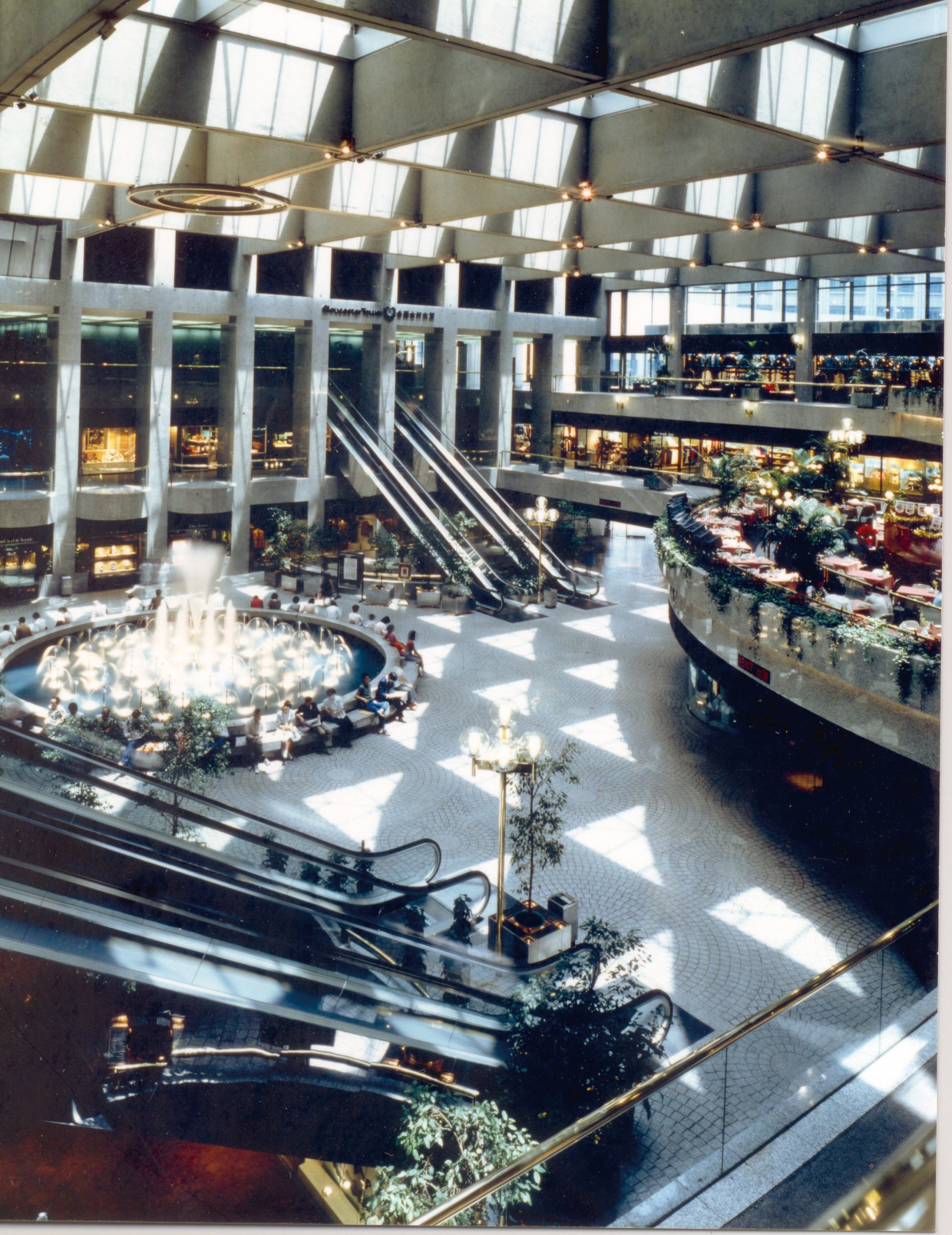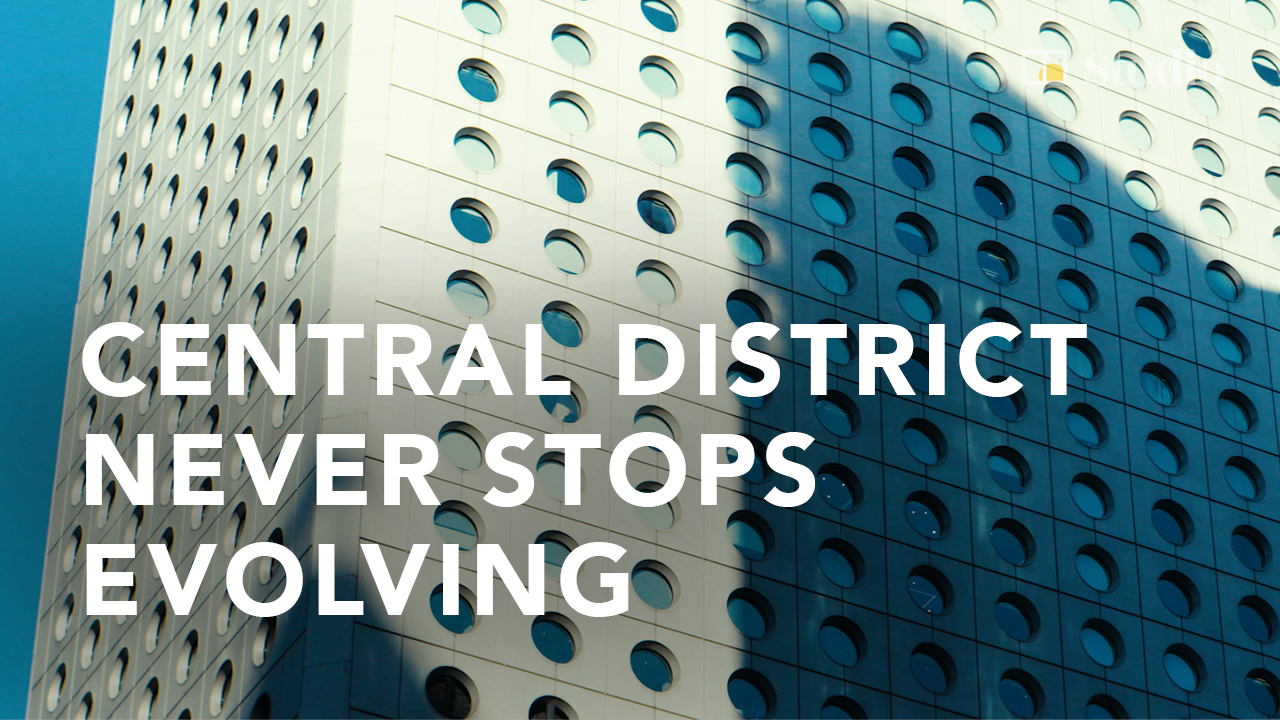How Jardine House, Hong Kong’s first skyscraper, led the evolution of the modern Central district
- Originally called Connaught Centre, Hongkong Land’s iconic waterfront building with the distinctive round windows opened in 1973 with a host of innovative features
- The development of the interconnected Landmark and Exchange Square complexes have also helped redefine Central as a destination for both business and leisure
Hong Kong’s Central district has historically been the beating heart of the city, where the business elite close deals and the upper echelon of society mingle. But it was in 1973 that a groundbreaking building heralded the birth of the modern Central.
That year, Hong Kong’s first skyscraper, the 52-storey Connaught Centre, was opened by property developer Hongkong Land on a premium waterfront site in Central. It was Asia’s tallest skyscraper at the time, and also became one of the world’s most recognisable buildings with its 1,748 circular glazed windows.
The building was an example of modern architectural prowess, featuring what were Asia’s fastest lifts and largest air-conditioning chillers, along with pressurised stairwells that took fire safety to a new level.
More importantly, it marked a new era for Central as the commercial hub of Hong Kong, which over the next half-century would see its economy grow from US$8 billion (in today’s dollars) to a GDP of about US$360 billion in 2022.
Renamed Jardine House in 1989, the building remains an icon of Central in the present day. Its ample public space – the structure itself only covers 36 per cent of the total site – continues to be a popular hang-out spot, featuring a soothing rectangular pool with a waterfall as well as the timelessly elegant bronze sculpture Double Oval, by British artist Henry Moore

For five decades, Jardine House has attracted leading companies to take up tenancies there, including global financial institutions, prestigious law firms and accounting services firms. Many of the original tenants have never relocated anywhere else.
The building still feels as good as new today, thanks to constant updates and maintenance efforts. In addition, it has evolved into a smart building with environmentally friendly features that help conserve water, maximise energy efficiency and ensure the proper collection and recycling of waste. It is also now equipped with machine-learning technology that leverages data analysis to reduce the operational carbon footprint.
The legacy of Jardine House in Hong Kong extends beyond its strategic location. It has seen sister properties spring up over the years, each marking another milestone for the Central district.
In the early 1980s, the phased completion of The Landmark and its office towers, located at the intersection of Pedder Street and Des Voeux Road Central, redefined Central as a place to not only do business, but also enjoy a premium lifestyle. It became a destination for experiencing the finer things in life and a prime spot to see and be seen.
Landmark has grown into a premium lifestyle brand that embodies Central. The original building, now called Landmark Atrium, continues to be home to many flagship stores for global luxury brands as well as Grade A offices. It is adjoined by three other premium commercial buildings that came under the Landmark umbrella in 2012.

The youngest of these is Landmark Chater, which opened in 2002 and has also become a high-end lifestyle destination. Prestigious international auction house Sotheby’s is set to open a state-of-the-art immersive exhibition space there later this year to house its auctions and exhibitions.
The other two “Landmark” buildings are evolving icons, just like Jardine House. Landmark Alexandra was originally built in 1904 and underwent a transformation in the 1950s before being revamped again in the mid-1970s to become the 37-storey tower seen today. In 1965, Landmark Prince’s Building was completed with a pioneering feature: an elevated pedestrian bridge that connected the building with the Mandarin Oriental hotel.
Throughout the 1970s, Hongkong Land would further develop a pedestrian bridge network linking buildings in Central. And with more of the developer’s properties also having direct connections to the MTR system, the district has become a one-of-a-kind commercial and lifestyle area that represents modern living in Hong Kong.
Also helping define the city as a global financial centre are One and Two Exchange Square, which Hongkong Land opened in 1985 with towers of 52 and 51 storeys, respectively. The complex housed what had been the newly consolidated Hong Kong stock exchange and its trading hall.
Today, Hongkong Land’s Central portfolio is an ecosystem of 12 interconnected prime commercial buildings that offer 450,000 square metres (4.8 million square feet) of Grade A offices and luxury retail spaces. It is a place for both work and play, and it is where people can inspire one another while striving for higher achievements. This portfolio also shows how buildings are not simply structures, but dynamic spaces that evolve with time.
Watch the video to hear more about the history and evolution of the Central district and its skyline, from the perspectives of those who spend their days there.


